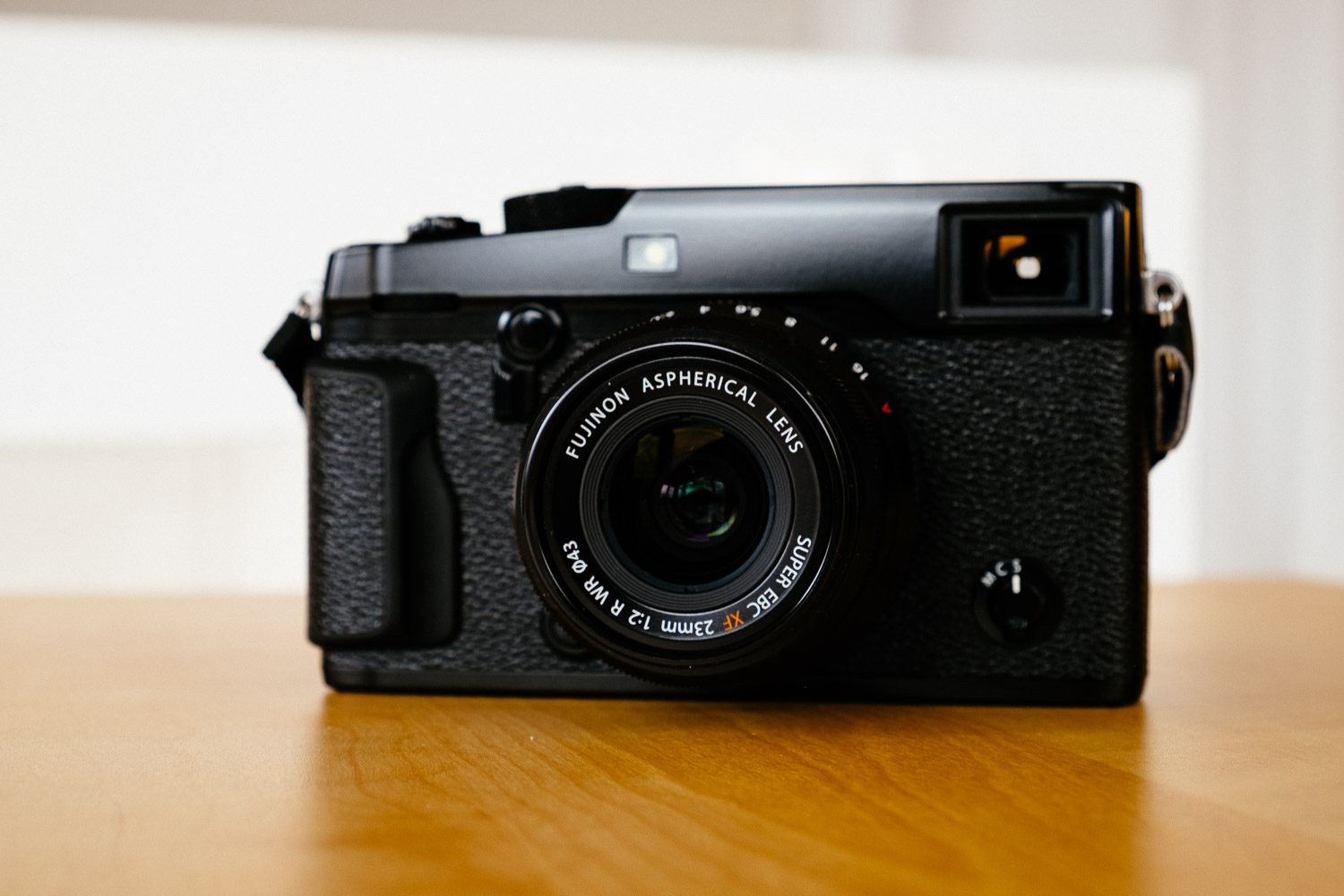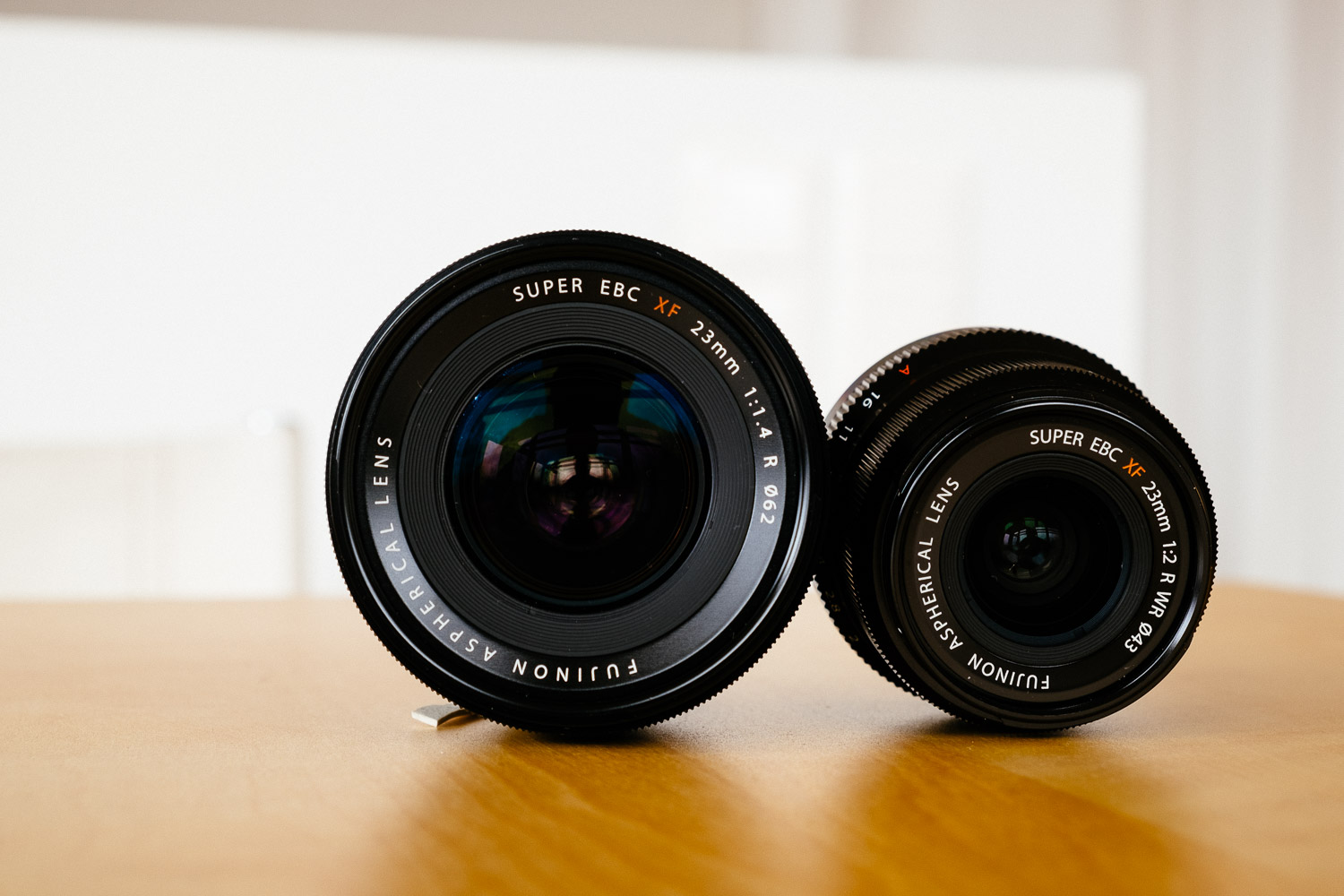 FUJIFILM X-T1 (44.4mm, f/8, 1/2 sec, ISO200)
FUJIFILM X-T1 (44.4mm, f/8, 1/2 sec, ISO200)
Recently Fuji started to update its lens line and added slower versions of their 35mm and 23mm lenses. But why should you get one of those over the faster version? It depends – here is a comparison of the two 23s.
1. Size/weight and mechanical quality
Let’s start with the most obvious difference in between those two lenses. While the XF 23/1.4 R is not a big and heavy lens at all especially if compared to full frame lenses it is a substantial lens in the mirror less world. The XF 23/1.4 R weighs 300 grams while the XF 23/2 WR is just 180 grams. If you think that is not much of a difference think again. It might be negligible if attached on a Nikon D5 but it is a huge difference on something like a X Pro-2 and even more so on one of the smaller bodies.
Of course size is different too but there is a simple solution to reduce the size of the XF 23/1.4 R: just get rid of the hideous lens shade that comes in the box and get the beautiful, rectangular lens shade from Fuji.
Built quality is excellent on both lenses. Fuji got the aperture rings just right. They have a nice click and just enough resistance to avoid that the aperture changes unintentionally when you take the camera out of the bag. It’s hard to ignore that the smaller and cheaper lens is weather sealed while the other one is not. That makes the Fuji XF 23/2 WR the clear winner regarding mechanical quality.
 FUJIFILM X-T1 (40.7mm, f/8, 1/2 sec, ISO200)
FUJIFILM X-T1 (40.7mm, f/8, 1/2 sec, ISO200)
2. Optical performance
Again, let’s start with the most obvious thing first. The bigger lens is one stop faster and because of that it gives better subject isolation when shot wide open. The difference is quite substantial and if you rate subject isolation and Bokeh above all else you can stop to read this article here. The XF 23/1.4 R is the better lens.
But not all shots are taken wide open. Especially in landscape or street shots you will shoot at f8 most of the time. If you intend to shoot landscape and street there is no reason to choose the larger and heavier lens over the new one. But thanks to the internet the newcomer got a bad reputation. The lens has one weakness: If shot wide open and at close distance it is a little soft. So if you plan to shoot up close at f2 all the time this is not your lens. Apart from that the XF 23/2 WR is a great performer. It compares well with the XF 23/1.4 R and regarding sharpness it is just as good. I shot the lens extensively when I visited the Taj Mahal last week and the level of detail and the sharpness was impressive.
But because of better subject isolation and Bokeh the XF 23/1,4 R is the clear winner.
 FUJIFILM X-T1 (42.5mm, f/8, 1/2 sec, ISO200)
FUJIFILM X-T1 (42.5mm, f/8, 1/2 sec, ISO200)
3. Usability
Two prime lenses, both 23mm, the only difference: 1 stop. But it is amazing how different those two lenses are. There is a reason why this focal length (or better the 35mm field of view) is so popular: it is extremely versatile. And if the lens is fast it is even more versatile. So is the XF 23/1.4 R the lens with better usability?
Not exactly. Unfortunately the 23/1.4 has two issues. First there is its bulk which makes it harder to use with the optical viewfinder of the X Pro-2 or Pro-1 but the more relevant point for most: This is not the fastest lens when it comes to autofocus. It’s not as slow as the 35/1.4 or the 56/1.2 but it is not terribly fast either. The XF 23/2 WR on the other hand focuses super fast and extremely reliable. And that is more important in the real world than a slightly better Bokeh. Do you really want to explain to your wife that your super fancy camera missed to focus when your three year old daughter blew out the candles on her birthday cake?
And that defines the applications for both lenses. If you have time or the chance to re-take the image the XF 23/1.4 R is the better lens because it renders the image more beautiful. In controlled conditions it is the better option.
Because of its faster and more reliable AF, because of its weather sealing, because it is substantially lighter and because it doesn’t block the optical viewfinder of the X Pro cameras usability has to go to the XF 23/2 WR.
 FUJIFILM X-T1 (37.4mm, f/8, 1/2 sec, ISO200)
FUJIFILM X-T1 (37.4mm, f/8, 1/2 sec, ISO200)
Conclusion:
If you jumped right here to read the conclusion I have to disappoint you. I will not repeat all the points I listed above. To decide in between those two lenses is not a straight forward decision. The new lens doesn’t render the old one obsolete and the more expensive lens isn’t the clearly better option either.
So what to do? I recommend to analyse your shooting style and simply decide based on that. If you have the chance I would also strongly recommend to visit a store and try out both on your camera. Get whatever feels better for you. For X Pro shooters it is hard to ignore that the new lens doesn’t block the optical viewfinder.
